Toyota RAV4 (XA40) 2013-2018 Service Manual: Parts location
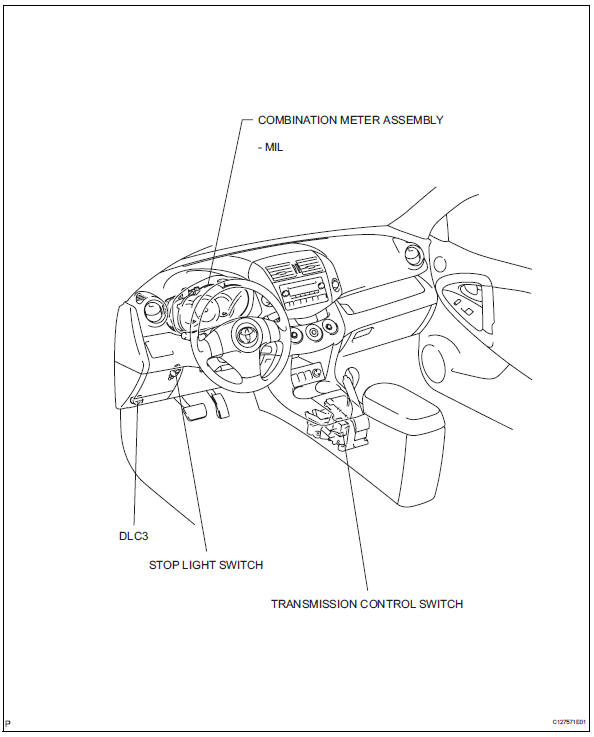
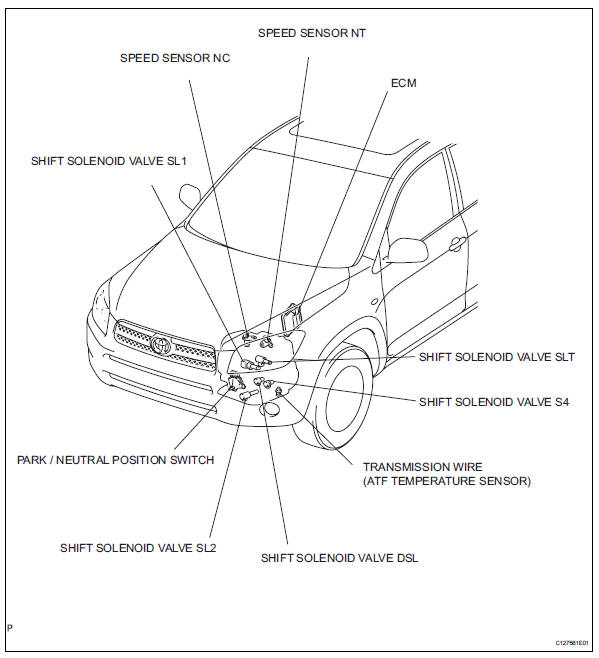
System diagram
The configuration of the electronic control system in the u140f automatic transaxle is as shown in the following chart.
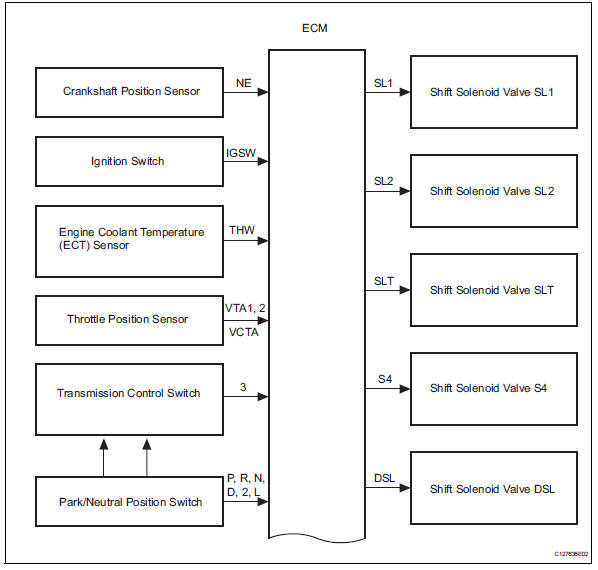
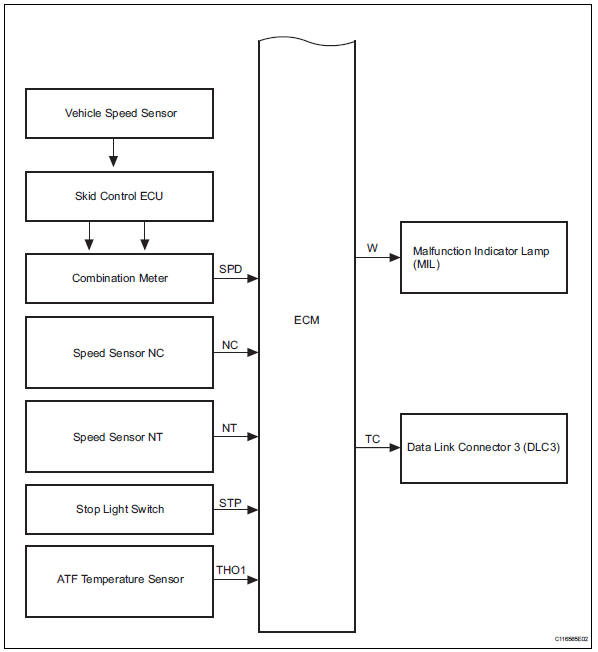
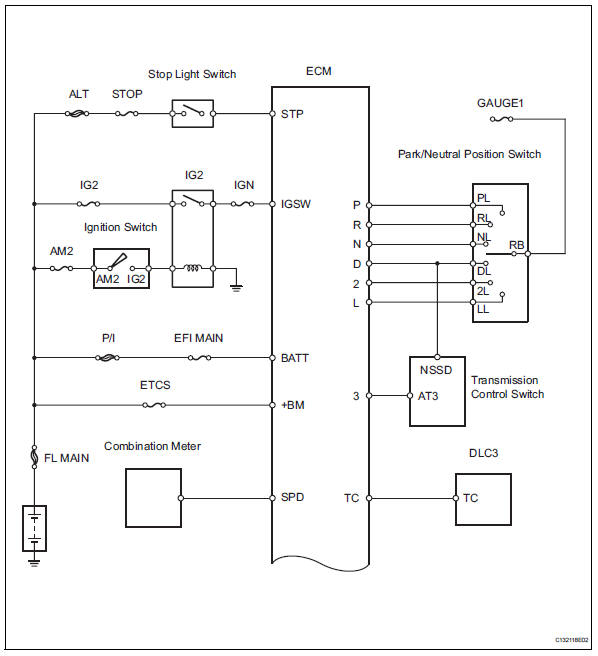
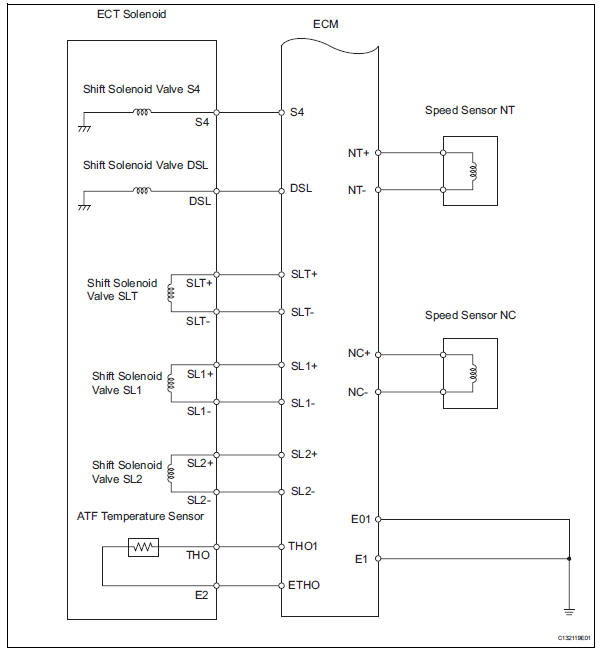
System description
- System description
- The electronic controlled automatic transaxle
(ect) is an automatic transaxle that electronically
controls shift timing using the engine control
module (ecm). The ecm detects electrical signals
that indicate engine and driving conditions, and
controls the shift point based on driver habits and
road conditions. As a result, fuel efficiency and
power transaxle performance are improved.
Shift shock is reduced by controlling the engine and transaxle simultaneously.
In addition, the ect has the following features:
- Diagnostic function.
- Fail-safe function when a malfunction occurs.
How to proceed with troubleshooting
Hint:
- The ecm of this system is connected to the can and multiplex communication system. Therefore, before starting troubleshooting, make sure to check that there is no trouble in the can and multiplex communication systems.
- *: Use the intelligent tester.
- Vehicle brought to workshop

- Customer problem analysis

- Inspect battery voltage
Standard voltage: 11 to 14 v
If the voltage is below 11 v, recharge or replace the battery before proceeding.

- Connect intelligent tester to dlc3*

- Check and clear dtcs and freeze frame data*

- Refer to the dtc check / clear (see page ax-29).
- Visual inspection

- Setting check mode diagnosis*
- Refer to the check mode procedure (see page ax-30).

- Problem symptom confirmation
- Refer to the road test (see page ax-12).
Result 


- Symptom simulation
- Refer to the electronic circuit inspection procedure (see page in-37).

- Dtc check*
- Refer to the dtc check / clear (see page ax-29).
Result 


- Basic inspection
- Refer to the automatic transmission fluid (see page ax-102).
- Refer to the park/neutral position switch (see page ax-108).
- Refer to the floor shift assembly (see page ax- 136).


- Mechanical system tests
- Refer to the mechanical system tests (see page ax-15).


- Hydraulic test
- Refer to the hydraulic test (see page ax-16).


- Manual shifting test
- Refer to the manual shifting test (see page ax- 17).


- Problem symptoms table chapter 1
- Refer to the problem symptoms table (see page ax-21).


- Problem symptoms table chapter 2
- Refer to the problem symptoms table (see page ax-21).

- Part inspection


- Dtc chart
- Refer to the diagnostic trouble code chart (see page ax-35).

- Circuit inspection

- Identification of problem

- Repair or replace

- Confirmation test

End
 Precaution
Precaution
Notice:
Perform the reset memory procedures (a/t
initialization) when replacing the automatic transaxle
assembly, engine assembly or ecm (see page ax-18).
Hint:
Reset memory cannot be completed b ...
 Road test
Road test
Problem symptom confirmation
Based on the result of the customer problem
analysis, try to reproduce the symptoms. If the
problem is that the transaxle does not shift up, shift
down, or ...
Other materials:
Oil filter
Components
Replacement
Caution:
Prolonged and repeated contact with engine oil will
cause the loss of natural oils from the skin, leading to
dryness, irritation and dermatitis. In addition, used
engine oil contains potentially harmful contaminants
which may cause skin cancer.
Pre ...
Reassembly
Hint:
Use the same procedures for the rh side and lh side.
The procedures listed below are for the lh side.
Install seat lock release band
Install the band with nut.
Hint:
After installing the band, feed it through the
seatback frame hole towards the rear of the vehicle.
I ...
Stuck in deceleration sensor
Description
The skid control ecu receives signals from the yaw rate and deceleration
sensor via the can
communication system.
The yaw rate sensor has a built-in deceleration sensor and detects the vehicle's
condition using 2 circuits
(gl1: g sensor 1, gl2: g sensor 2).
If there is t ...
